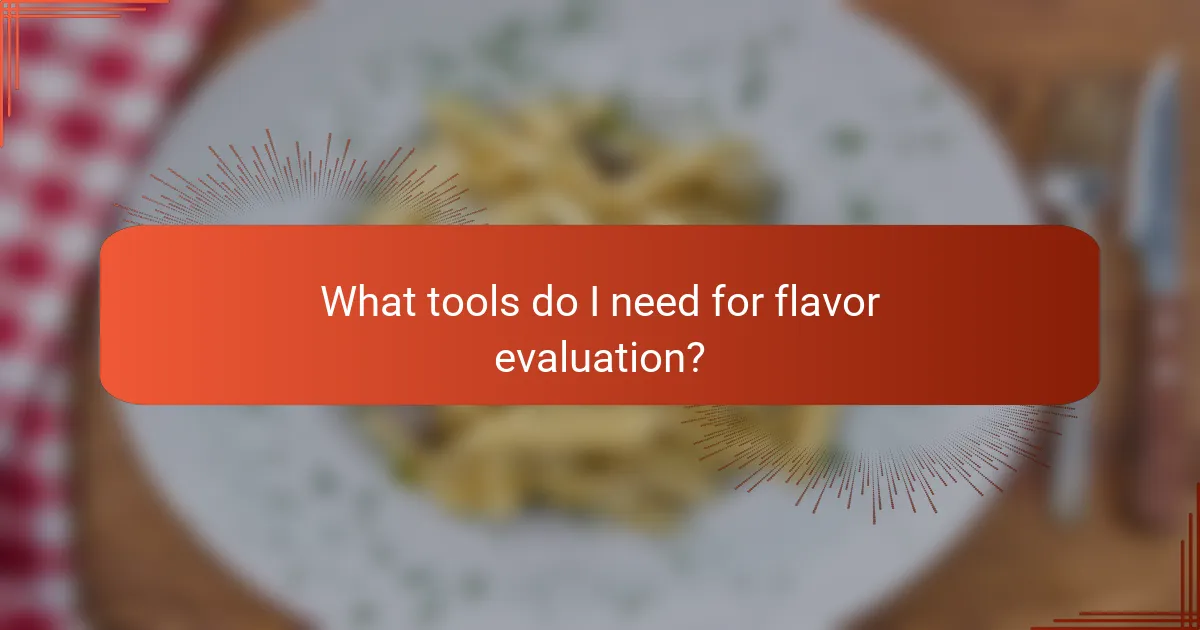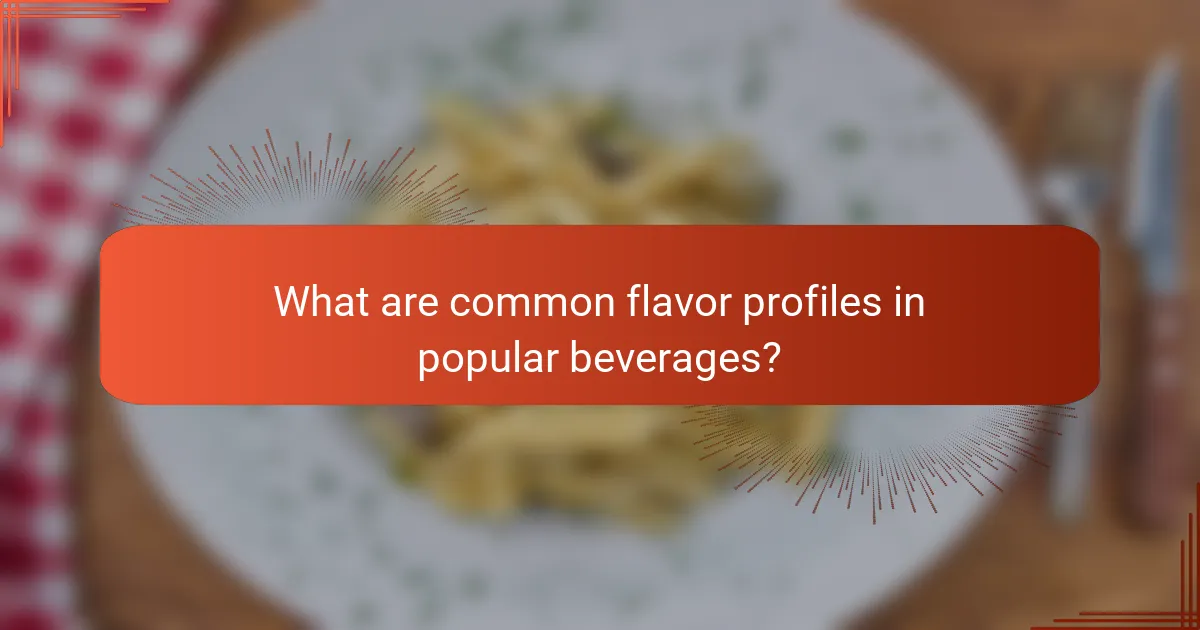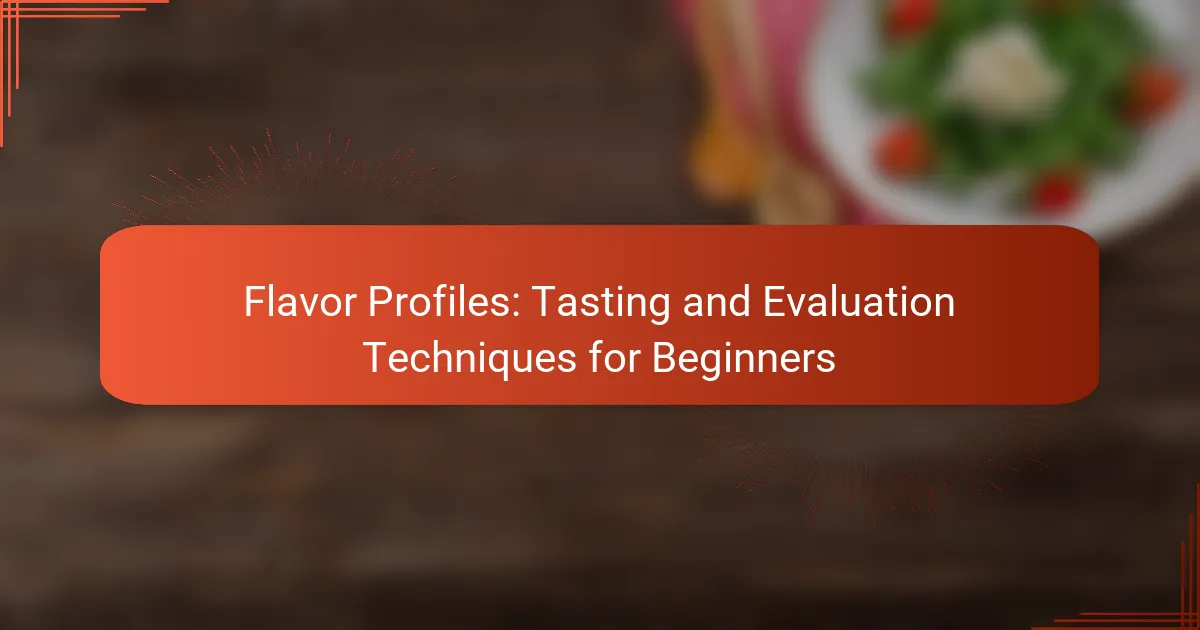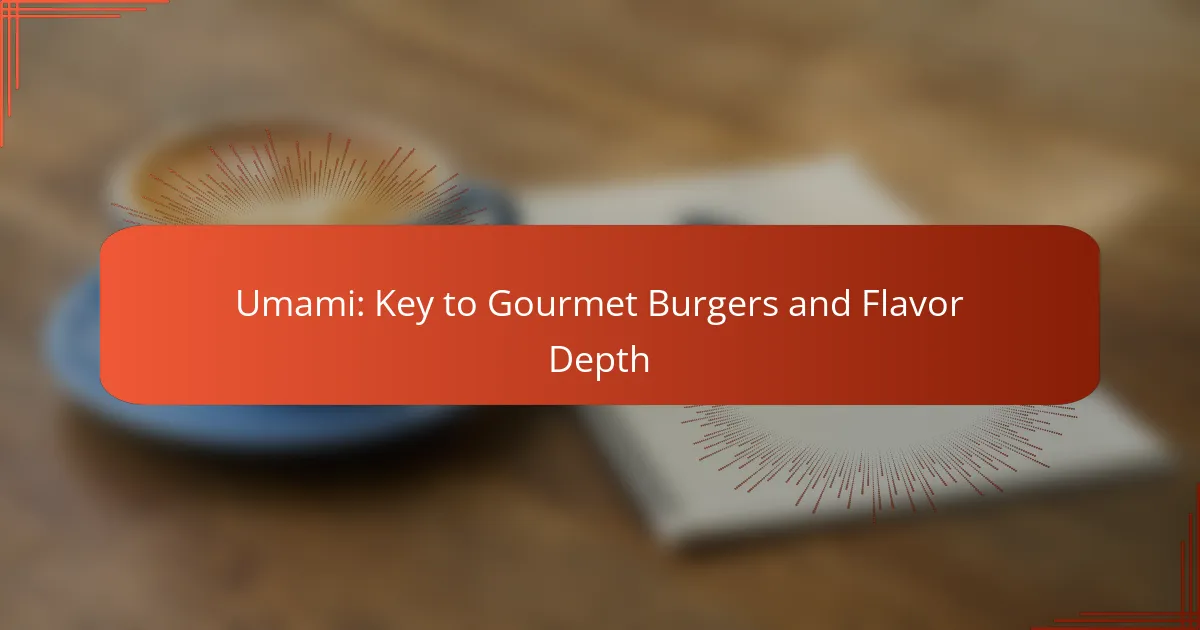Understanding flavor profiles is essential for anyone looking to enhance their tasting skills. By employing specific sensory techniques, you can learn to identify primary flavors, assess balance and complexity, and appreciate the nuances of various foods and beverages. With the right tools and a structured approach, you can elevate your tasting experience and develop a deeper appreciation for what you consume.

What are the best tasting techniques for flavor profiles?
The best tasting techniques for evaluating flavor profiles involve a combination of sensory methods that enhance your ability to discern and appreciate different tastes. By employing these techniques, you can develop a more nuanced understanding of flavors and improve your tasting skills over time.
Swirling and sniffing
Swirling and sniffing is a fundamental technique that helps release the aromas of a beverage, enhancing your overall tasting experience. When you swirl, you aerate the liquid, allowing volatile compounds to escape, which you can then capture through your nose.
To practice this, pour a small amount into a glass, gently swirl it, and take a deep sniff. Focus on identifying different scents, which can provide clues about the flavor profile. Avoid overwhelming your senses by taking breaks between sniffs.
Tasting in stages
Tasting in stages involves breaking down the tasting process into distinct phases: initial taste, mid-palate, and finish. This method allows you to analyze how flavors evolve over time and helps you recognize the complexity of the profile.
Start by taking a small sip and noting the immediate flavors. Then, let the liquid sit on your palate to experience the mid-palate flavors before swallowing to assess the finish. This staged approach can reveal layers of taste that might otherwise go unnoticed.
Using a flavor wheel
A flavor wheel is a visual tool that categorizes different flavors and aromas, making it easier to identify and articulate what you taste. By referencing a flavor wheel, you can connect your sensory experiences to specific terms and descriptions.
When tasting, consult the wheel to pinpoint flavors that match your impressions. This can be particularly helpful for beginners who may struggle to describe what they are experiencing. Keep a flavor wheel handy for quick reference during tastings.
Comparative tasting
Comparative tasting involves sampling multiple items side by side to better understand their differences and similarities. This technique sharpens your palate and enhances your ability to discern subtle variations in flavor profiles.
To conduct a comparative tasting, select two or more similar items, such as different wines or cheeses, and taste them in succession. Take notes on each item’s characteristics, which can help solidify your understanding of flavor nuances.
Documenting impressions
Documenting your impressions is crucial for tracking your tasting progress and refining your palate. Keeping a tasting journal allows you to record your observations, preferences, and any patterns you notice over time.
In your journal, note the date, the items tasted, and your sensory impressions, including flavors, aromas, and textures. This practice not only helps you remember your experiences but also aids in developing a more sophisticated understanding of flavor profiles.

How do I evaluate flavor profiles effectively?
To evaluate flavor profiles effectively, focus on identifying the primary flavors, assessing the balance and complexity, and recognizing the aftertaste. This structured approach helps you appreciate the nuances in food and beverages, enhancing your tasting experience.
Identifying primary flavors
Identifying primary flavors is the first step in flavor evaluation. Common primary flavors include sweet, sour, salty, bitter, and umami. When tasting, take a moment to isolate these flavors and determine which ones stand out the most.
To practice, try tasting a variety of foods or drinks, such as fruits, chocolates, or cheeses, and note the dominant flavors. For example, a ripe mango may present a strong sweetness with subtle acidity, while a dark chocolate might showcase bitterness paired with sweetness.
Assessing balance and complexity
Balance refers to how well the primary flavors complement each other, while complexity involves the layers of flavors present in a tasting experience. A well-balanced dish will have no single flavor overpowering the others, creating a harmonious profile.
To assess balance, consider how flavors interact. For instance, a dish with a rich, fatty element may need acidity to cut through the richness. Complexity can be evaluated by identifying additional flavors that emerge over time, such as spices or herbs that enhance the overall experience.
Recognizing aftertaste
Aftertaste, or finish, is the lingering flavor that remains after swallowing. It can provide insight into the quality and character of the food or beverage. A pleasant aftertaste often indicates a well-crafted product, while an unpleasant one may suggest flaws.
When evaluating aftertaste, pay attention to its duration and characteristics. A long, smooth finish in a wine might indicate higher quality, while a short, harsh aftertaste in a beer could signal imbalance. Practice by tasting various items and noting how their aftertastes differ.

What tools do I need for flavor evaluation?
To effectively evaluate flavors, you need a few essential tools that enhance your tasting experience and help you articulate your observations. These tools include a flavor wheel, appropriate tasting glasses, a notebook for notes, and a spittoon for wine tasting.
Flavor wheel
A flavor wheel is a visual representation that categorizes and describes various flavors and aromas. It helps tasters identify and articulate specific notes they perceive in a beverage or food item. Using a flavor wheel can make it easier to communicate your tasting experiences and improve your palate over time.
When selecting a flavor wheel, look for one that covers a wide range of flavors, including basic categories like fruity, floral, and earthy. Many flavor wheels are available online for free, or you can purchase printed versions for convenience.
Tasting glasses
The right tasting glasses can significantly influence your flavor evaluation. Glasses designed specifically for tasting often have a shape that concentrates aromas, enhancing your ability to detect subtle notes. For wine, tulip-shaped glasses are popular, while spirits may be best evaluated in Glencairn glasses.
Ensure your glasses are clean and free from any residual odors. Using the same type of glass for all tastings can help maintain consistency and improve your ability to compare flavors across different samples.
Notebook for notes
A dedicated notebook for notes is essential for documenting your tasting experiences and observations. Writing down your thoughts helps reinforce your memory and allows you to track your progress over time. Include sections for different tastings, noting the date, type of beverage, and your flavor impressions.
Consider using a structured format with prompts for aroma, taste, finish, and overall impression. This approach can help you develop a more systematic way of evaluating flavors and make it easier to refer back to your notes later.
Spittoon for wine tasting
A spittoon is a practical tool for wine tasting, allowing you to taste multiple wines without consuming too much alcohol. This is particularly useful during tastings where you want to evaluate several options without becoming inebriated. A simple bowl or a specialized spittoon can serve this purpose.
When using a spittoon, aim to spit out the wine after swirling it in your mouth to fully experience its flavors. This practice not only helps maintain clarity during tastings but also enhances your ability to focus on the nuances of each wine.

What are common flavor profiles in popular beverages?
Common flavor profiles in popular beverages include a variety of tastes that enhance the drinking experience. These profiles can range from fruity and floral to earthy and spicy, depending on the beverage type and its ingredients.
Citrus in wines
Citrus flavors in wines often manifest as notes of lemon, lime, orange, or grapefruit. These flavors are particularly prominent in white wines, such as Sauvignon Blanc and Riesling, where acidity plays a crucial role in balancing sweetness.
When tasting for citrus notes, look for a bright, zesty quality that can invigorate the palate. A good tip is to swirl the wine in your glass and take a deep sniff; this can help release those vibrant citrus aromas.
Earthy notes in coffee
Earthy notes in coffee can be described as rich, deep flavors reminiscent of soil, wood, or even mushrooms. These profiles are often found in coffees sourced from regions like Sumatra or Ethiopia, where the growing conditions contribute to these unique characteristics.
To identify earthy notes, pay attention to the coffee’s body and finish. A full-bodied coffee with a lingering aftertaste may indicate strong earthy undertones. Brewing methods such as French press or cold brew can enhance these flavors, making them more pronounced.
Spicy flavors in teas
Spicy flavors in teas can include hints of cinnamon, ginger, or cardamom, often found in chai blends or herbal infusions. These spices add warmth and complexity, making the tea experience more dynamic.
When evaluating spicy notes, consider the balance between the spice and the tea’s base flavor. A well-crafted chai, for example, should have a harmonious blend of spices without overpowering the tea itself. Experimenting with steeping times can also help bring out these spicy characteristics more effectively.

How can I improve my tasting skills over time?
Improving your tasting skills requires consistent practice and exposure to different flavors. By regularly engaging in tasting activities and attending events, you can enhance your palate and develop a deeper understanding of flavor profiles.
Regular practice
To refine your tasting skills, make it a habit to taste a variety of foods and beverages regularly. Focus on different categories, such as wines, cheeses, or spices, and pay attention to their unique characteristics. Aim for at least once a week to keep your palate sharp.
During each tasting session, take notes on the flavors you detect, their intensity, and how they evolve over time. This practice will help you identify patterns and improve your descriptive vocabulary, making it easier to articulate your experiences.
Attending tasting events
Participating in tasting events is an excellent way to broaden your exposure to diverse flavor profiles. Look for local wine tastings, food festivals, or culinary workshops that focus on specific ingredients or cuisines. These events often feature experts who can provide valuable insights and guidance.
When attending, engage with other participants and share your thoughts. This interaction can enhance your understanding and introduce you to new perspectives. Consider joining tasting clubs or groups to create a supportive environment for ongoing learning and practice.



